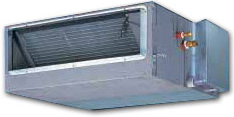- NZ Home
- Product Overview
- Our Brands
- Spare Parts
- Tech Info
- Selection Programs
- Warranty
- About Us
- Contact
Hitachi's Unique Advantage for Air-Side Commissioning
Products
Brands
Quick Links
- www.hitachiaircon.co.nz Hitachi Heat Pump Website
- temperzone NEWS Find out what's new
- Product Overiew Handy refrerence PDF
- Gen. Conditions of Sale What are they?
- Energy Rating/MEPS Compliance. Search & compare
- Our Australian Trade Site What's available in Oz?
- Can't Open Links? Web browser compatibility

In a world where everyone wants everything done yesterday, HITACHI offers you an advantage that can help you meet those tight deadlines and avoid costly penalties. During the recent installation and commissioning of a large VRF project in New Zealand, HITACHI did just that.
John Greaves, Hitachi Technical Manager in New Zealand, explains that, “HITACHI ducted units will run in ‘fan only’ mode even if the main communication wire, H-link, is not connected to other indoor/outdoor units. In other brands, a communication fault occurs as soon as the indoor units are turned on in any mode without a completed communication circuit – this is not the case with HITACHI.
“During a recent large VRF project in NZ, this unique Hitachi advantage was used by the installer to undertake airflow testing/commissioning on ducted units well before the rest of the installation was completed.
“In this case, the installer had a functional and balanced air side on 43 x ducted indoor units before the VRF outdoor units were even installed. This was very important as the job was under an extremely tight time frame – major problems would have resulted if air balancing had to be done afterwards! Late completion penalties were avoided and everyone was very happy. The consultant even commented that they were very impressed that this could be done with HITACHI.”
Technical Details:
HITACHI Indoor Unit (IDU) electronic expansion valves (EEVs) are supplied from the factory open, and close only when power is supplied to both the IDU and ODU, and H-Link is connected. So the EEV does not close if doing airside balancing as above – removing any possible evacuation issues (best practice is always to evacuate from both the liquid and gas pipes anyway). This advantage, combined with Temperzone’s National Warehouse System, means that together, they can provide solutions to your air conditioning issues.

